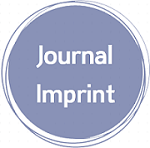The Genomic and Structural Organization of SARS-CoV-2: A Mutational Perspective
Downloads
The ongoing pandemic due to the novel SARS-CoV-2 disease (COVID-19) has exerted a great toll on human health. The SARS-CoV-2 is the third most pathogenic human CoV after SARS-CoV-1 and MERS-CoV, which is classified within the genus Betacoronavirus. Though the actual source of its origin and transmission is still unclear, genetic analysis has shown its very close similarity (~96%) with bat SARS-like CoV. SARS-CoV-2 is a spherically-icosahedral virus with a plus-sense single-strand RNA (~30 kb) genome defined into thirteen open reading frames, which encode 2 non-structural polyproteins, 4 structural proteins and 6 accessory proteins. Of its structural proteins the ‘S1’ subunit of spike (S) contains the cellular ACE-2 receptor binding domain (RBD) whereas the ‘S2’ subunit is required for cell membrane fusion. The membrane (M) protein participates in cell-fusion whereas envelope (E) is necessary for virion assembly and morphogenesis. The non-structural polyproteins (pp1a and pp1b) undergo proteolytic processing to produce a total of 16 small proteins, which are involved in mRNA synthesis and replication. Of the accessory proteins (3a, 6, 7a, 7b, 8 and 9b), few are known to modulate host-innate immunity. Interestingly, ‘3b’ is absent in SARS-CoV-2 that significantly differentiates it from other human CoV. Detection of several novel mutations in ‘3a’, ‘3b’ and ‘ORF8’ proteins, notably in the ‘S’ RBD strongly suggest SARS-CoV-2 enhanced cell attachment and facilitated entry, its high infectivity and disease severity in humans. The recent emergence of highly contagious SARS-CoV-2 RBD variants in the United Kingdom (B.1.1.7 strain), South Africa (B.1.351 strain) and Brazil (P.1 strain), and their subsequent spread to other counties have raised serious concerns.
Doi:10.28991/SciMedJ-2021-0301-8
Full Text:PDF
Downloads
Parvez, M. K., & Parveen, S. (2017). Evolution and Emergence of Pathogenic Viruses: Past, Present, and Future. Intervirology, 60(1-2), 1–7. doi:10.1159/000478729.
Ren, L.-L., Wang, Y.-M., Wu, Z.-Q., Xiang, Z.-C., Guo, L., Xu, T., … Wang, J.-W. (2020). Identification of a novel coronavirus causing severe pneumonia in human: a descriptive study. Chinese Medical Journal, 133(9), 1015–1024. doi:10.1097/cm9.0000000000000722.
WHO Coronavirus Disease (COVID-19) Dashboard. Available online: https://covid19.who.int/. (assessed on January 2021).
Parvez, M., Jagirdar, R., Purty, R., Venkata, S., Agrawal, V., Kumar, J., & Tiwari, N. (2020). COVID‑19 pandemic: Understanding the emergence, pathogenesis and containment (Review). World Academy of Sciences Journal. 2(5). doi:10.3892/wasj.2020.59.
WHO Director-General's opening remarks at the media briefing on COVID-19. Available online: https://www.who.int/dg/speeches/detail/who-director-general-s-opening-remarks-at-the-media-briefing-on-covid-19---18-march-2020. (assessed on November 2020).
Seto, W., Tsang, D., Yung, R., Ching, T., Ng, T., Ho, M., … Peiris, J. (2003). Effectiveness of precautions against droplets and contact in prevention of nosocomial transmission of severe acute respiratory syndrome (SARS). The Lancet, 361(9368), 1519–1520. doi:10.1016/s0140-6736(03)13168-6
Van Doremalen, N., Bushmaker, T., Morris, D. H., Holbrook, M. G., Gamble, A., Williamson, B. N., … Munster, V. J. (2020). Aerosol and Surface Stability of SARS-CoV-2 as Compared with SARS-CoV-1. New England Journal of Medicine, 382(16), 1564–1567. doi:10.1056/nejmc2004973
Huang, C., Wang, Y., Li, X., Ren, L., Zhao, J., Hu, Y., … Cao, B. (2020). Clinical features of patients infected with 2019 novel coronavirus in Wuhan, China. The Lancet, 395(10223), 497–506. doi:10.1016/s0140-6736(20)30183-5.
Wong, H. Y. F., Lam, H. Y. S., Fong, A. H.-T., Leung, S. T., Chin, T. W.-Y., Lo, C. S. Y., … Ng, M.-Y. (2020). Frequency and Distribution of Chest Radiographic Findings in Patients Positive for COVID-19. Radiology, 296(2), E72–E78. doi:10.1148/radiol.2020201160.
Gu, J., Han, B., & Wang, J. (2020). COVID-19: Gastrointestinal Manifestations and Potential Fecal–Oral Transmission. Gastroenterology, 158(6), 1518–1519. doi:10.1053/j.gastro.2020.02.054.
Parvez, M. K. (2020). COVID-19 and coronaviral hepatitis: evidence of collateral damage. Future Virology, 15(6), 325–329. doi:10.2217/fvl-2020-0065.
Parvez, M.K. 2020. Gastrointestinal and hepatobiliary manifestations of COVID-19: potential implications for healthcare resource-deficient countries.. Gastroenterol Hepatol Lett, 2, 7-11.
Parvez, M.K. 2020. Gut feeling: The plausible faecal-oral transmission route of Covid-19. J Infect Dis Epidemiol, 6,141-143.
Li, W., Shi, Z., Yu, M., Ren, W., Smith, C., Epstein, J.H., Wang, H., Crameri, G., Hu, Z., Zhang, H., Zhang, J., McEachern, J., Field, H., Daszak, P., Eaton, B.T., Zhang, S., Wang, L.F. (2005). Bats Are Natural Reservoirs of SARS-Like Coronaviruses. Science, 310(5748), 676–679. doi:10.1126/science.1118391.
Schuchat, A. (2020). Public Health Response to the Initiation and Spread of Pandemic COVID-19 in the United States, February 24–April 21, 2020. MMWR. Morbidity and Mortality Weekly Report, 69(18), 551–556. doi:10.15585/mmwr.mm6918e2.
Parashar, U. D. (2004). Severe acute respiratory syndrome: review and lessons of the 2003 outbreak. International Journal of Epidemiology, 33(4), 628–634. doi:10.1093/ije/dyh198.
Gandhi, M., Yokoe, D. S., & Havlir, D. V. (2020). Asymptomatic Transmission, the Achilles’ Heel of Current Strategies to Control Covid-19. New England Journal of Medicine, 382(22), 2158–2160. doi:10.1056/nejme2009758.
Kakodkar, P., Kaka, N., & Baig, M. (2020). A Comprehensive Literature Review on the Clinical Presentation, and Management of the Pandemic Coronavirus Disease 2019 (COVID-19). Cureus. doi:10.7759/cureus.7560.
ClinicalTrials. Available online: https://clinicaltrials.gov/ct2/ (accessed on March 2020).
Parvez, M. K., & Padhan, K. (2020). Current advances in novel SARS-CoV-2 disease (COVID-19) treatment and intervention strategies. Coronaviruses, 01. doi:10.2174/2666796701999201116125249.
Chen, Y., Liu, Q., & Guo, D. (2020). Emerging coronaviruses: Genome structure, replication, and pathogenesis. Journal of Medical Virology, 92(4), 418–423. doi:10.1002/jmv.25681.
Wu, F., Zhao, S., Yu, B., Chen, Y.-M., Wang, W., Song, Z.-G., … Zhang, Y.-Z. (2020). A new coronavirus associated with human respiratory disease in China. Nature, 579(7798), 265–269. doi:10.1038/s41586-020-2008-3.
Gorbalenya, A. E., Baker, S. C., Baric, R. S., de Groot, R. J., Drosten, C., Gulyaeva, A. A., ... & Ziebuhr, J. (2020). Coronaviridae Study Group of the International Committee on Taxonomy of Viruses. The species severe acute respiratory syndrome-related coronavirus: classifying 2019-nCoV and naming it SARS-CoV-2. Nature Microbiol, 5(4), 536-544.
Ziebuhr, J. (2004). Molecular biology of severe acute respiratory syndrome coronavirus. Current Opinion in Microbiology, 7(4), 412–419. doi:10.1016/j.mib.2004.06.007.
Kumar, S., Maurya, V. K., Prasad, A. K., Bhatt, M. L. B., & Saxena, S. K. (2020). Structural, glycosylation and antigenic variation between 2019 novel coronavirus (2019-nCoV) and SARS coronavirus (SARS-CoV). VirusDisease, 31(1), 13–21. doi:10.1007/s13337-020-00571-5.
Chan, J. F.-W., Kok, K.-H., Zhu, Z., Chu, H., To, K. K.-W., Yuan, S., & Yuen, K.-Y. (2020). Genomic characterization of the 2019 novel human-pathogenic coronavirus isolated from a patient with atypical pneumonia after visiting Wuhan. Emerging Microbes & Infections, 9(1), 221–236. doi:10.1080/22221751.2020.1719902.
Walls, A. C., Park, Y.-J., Tortorici, M. A., Wall, A., McGuire, A. T., & Veesler, D. (2020). Structure, Function, and Antigenicity of the SARS-CoV-2 Spike Glycoprotein. Cell, 181(2), 281–292.e6. doi:10.1016/j.cell.2020.02.058.
Padhan, K., Parvez, M. K., & Al-Dosari, M. S. (2021). Comparative sequence analysis of SARS-CoV-2 suggests its high transmissibility and pathogenicity. Future Virology. doi:10.2217/fvl-2020-0204.
Wan, Y., Shang, J., Graham, R., Baric, R. S., & Li, F. (2020). Receptor Recognition by the Novel Coronavirus from Wuhan: an Analysis Based on Decade-Long Structural Studies of SARS Coronavirus. Journal of Virology, 94(7). doi:10.1128/jvi.00127-20.
Coutard, B., Valle, C., de Lamballerie, X., Canard, B., Seidah, N. G., & Decroly, E. (2020). The spike glycoprotein of the new coronavirus 2019-nCoV contains a furin-like cleavage site absent in CoV of the same clade. Antiviral Research, 176, 104742. doi:10.1016/j.antiviral.2020.104742.
Schoeman, D., Gordon, B., Fielding, B. C. (2021). Pathogenic Human Coronaviruses. Ref Mod Biomed Sci, B978-0-12-818731-9.00052-5.
Neuman, B. W., Kiss, G., Kunding, A. H., Bhella, D., Baksh, M. F., Connelly, S., … Buchmeier, M. J. (2011). A structural analysis of M protein in coronavirus assembly and morphology. Journal of Structural Biology, 174(1), 11–22. doi:10.1016/j.jsb.2010.11.021.
Ye, Q., West, A. M. V., Silletti, S., & Corbett, K. D. (2020). Architecture and self-assembly of the SARS-CoV-2 nucleocapsid protein. BioRxiv. doi:10.1101/2020.05.17.100685
Leung, D. T. M., Tam, F. C. H., Ma, C. H., Chan, P. K. S., Cheung, J. L. K., Niu, H., … Lim, P. L. (2004). Antibody Response of Patients with Severe Acute Respiratory Syndrome (SARS) Targets the Viral Nucleocapsid. The Journal of Infectious Diseases, 190(2), 379–386. doi:10.1086/422040.
Cárdenas‐Conejo, Y., Liñan‐Rico, A., García‐Rodríguez, D. A., Centeno‐Leija, S., & Serrano‐Posada, H. (2020). An exclusive 42 amino acid signature in pp1ab protein provides insights into the evolutive history of the 2019 novel human‐pathogenic coronavirus (SARS‐CoV‐2). Journal of Medical Virology, 92(6), 688–692. doi:10.1002/jmv.25758.
Fehr, A. R., & Perlman, S. (2015). Coronaviruses: An Overview of Their Replication and Pathogenesis. Methods in Molecular Biology, 1–23. doi:10.1007/978-1-4939-2438-7_1.
Chan, J. F.-W., Kok, K.-H., Zhu, Z., Chu, H., To, K. K.-W., Yuan, S., & Yuen, K.-Y. (2020). Genomic characterization of the 2019 novel human-pathogenic coronavirus isolated from a patient with atypical pneumonia after visiting Wuhan. Emerging Microbes & Infections, 9(1), 221–236. doi:10.1080/22221751.2020.1719902.
Ceraolo, C., & Giorgi, F. M. (2020). Genomic variance of the 2019‐nCoV coronavirus. Journal of Medical Virology, 92(5), 522–528. doi:10.1002/jmv.25700.
Laha, S., Chakraborty, J., Das, S., Manna, S. K., Biswas, S., & Chatterjee, R. (2020). Characterizations of SARS-CoV-2 mutational profile, spike protein stability and viral transmission. Infection, Genetics and Evolution, 85, 104445. doi:10.1016/j.meegid.2020.104445.
Benvenuto, D., Demir, A. B., Giovanetti, M., Bianchi, M., Angeletti, S., Pascarella, S., … Cassone, A. (2020). Evidence for mutations in SARS‐CoV‐2 Italian isolates potentially affecting virus transmission. Journal of Medical Virology, 92(10), 2232–2237. doi:10.1002/jmv.26104.
Kozlovskaya, L., Piniaeva, A., Ignatyev, G., Selivanov, A., Shishova, A., Kovpak, A., … Ishmukhametov, A. (2020). Isolation and phylogenetic analysis of SARS-CoV-2 variants collected in Russia during the COVID-19 outbreak. International Journal of Infectious Diseases, 99, 40–46. doi:10.1016/j.ijid.2020.07.024.
Sheikh, J. A., Singh, J., Singh, H., Jamal, S., Khubaib, M., Kohli, S., … Hasnain, S. E. (2020). Emerging genetic diversity among clinical isolates of SARS-CoV-2: Lessons for today. Infection, Genetics and Evolution, 84, 104330. doi:10.1016/j.meegid.2020.104330.
Licastro, D., Rajasekharan, S., Dal Monego, S., Segat, L., D’Agaro, P., & Marcello, A. (2020). Isolation and Full-Length Genome Characterization of SARS-CoV-2 from COVID-19 Cases in Northern Italy. Journal of Virology, 94(11). doi:10.1128/jvi.00543-20.
Wan, Y., Shang, J., Graham, R., Baric, R. S., & Li, F. (2020). Receptor Recognition by the Novel Coronavirus from Wuhan: an Analysis Based on Decade-Long Structural Studies of SARS Coronavirus. Journal of Virology, 94(7). doi:10.1128/jvi.00127-20.
Wrapp, D., Wang, N., Corbett, K. S., Goldsmith, J. A., Hsieh, C.-L., Abiona, O., … McLellan, J. S. (2020). Cryo-EM structure of the 2019-nCoV spike in the prefusion conformation. Science, 367(6483), 1260–1263. doi:10.1126/science.abb2507.
Cantuti-Castelvetri, L., Ojha, R., Pedro, L. D., Djannatian, M., Franz, J., Kuivanen, S., … Simons, M. (2020). Neuropilin-1 facilitates SARS-CoV-2 cell entry and infectivity. Science, 370(6518), 856–860. doi:10.1126/science.abd2985.
Shah, A., Rashid, F., Aziz, A., Jan, A. U., & Suleman, M. (2020). Genetic characterization of structural and open reading Fram-8 proteins of SARS-CoV-2 isolates from different countries. Gene Reports, 21, 100886. doi:10.1016/j.genrep.2020.100886.
Shen, L., Bard, J. D., Biegel, J. A., Judkins, A. R., & Gai, X. (2020). Comprehensive genome analysis of 6,000 USA SARS-CoV-2 isolates reveals haplotype signatures and localized transmission patterns by state and by country. doi:10.1101/2020.05.23.20110452.
Emerging SARS-CoV-2 Variants. Available online: https://www.cdc.gov/coronavirus/2019-ncov/more/science-and-research/scientific-brief-emerging-variants.html (accessed on November 2020).
- This work (including HTML and PDF Files) is licensed under a Creative Commons Attribution 4.0 International License.












